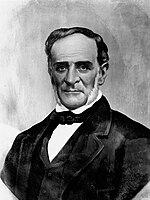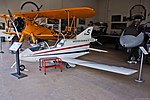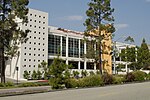Rolling Hills Country Day School
1961 establishments in CaliforniaAll Wikipedia neutral point of view disputesEducational institutions established in 1961Private elementary schools in CaliforniaPrivate middle schools in California ... and 2 more
Schools in Los Angeles County, CaliforniaWikipedia neutral point of view disputes from October 2012

Rolling Hills Country Day School is a nonsectarian independent Kindergarten to Grade 8 school located in Rolling Hills Estates on the Palos Verdes Peninsula in Los Angeles County, California. The school is a for-profit school, owned by the school administration, the director and vice principal hold majority shares.
Excerpt from the Wikipedia article Rolling Hills Country Day School (License: CC BY-SA 3.0, Authors, Images).Rolling Hills Country Day School
Crenshaw Boulevard,
Geographical coordinates (GPS) Address Nearby Places Show on map
Geographical coordinates (GPS)
| Latitude | Longitude |
|---|---|
| N 33.783333333333 ° | E -118.35111111111 ° |
Address
Crenshaw Boulevard
90275 , Rolling Hills Estates
California, United States
Open on Google Maps








